| Research Material |
Multimodal Change Detection [NACCL] [M3CD] [FPMSMCD] [CICMMCD]
Fusion of label fields [GCEBFM] [FMBFM] [VOIBFM] [PRIF] [FCR]
Restoration/Deconvolution [SFRBR] [NLREST] [DECWAV]
Saliency Detection [PPMRF] [COSOV1NET] [MDSSME]
Symmetry/Asymmetry Detection [BISDA] [PAMGA]
Hyperspectral Compression [BCOCDM] [M4ICD]
Segmentation [MDSCCT] [MD2S][SCKM]
Reconstruction [SFSBM] [DCT-EM]
Sound Classification [ESCLBP]
HDR Compression [PAGETM]
Image Sonification [VFBAIS]
Contour Detection [BIEDA]
Image Browsing [SCVOI]
Vizualisation [OBEHS]
Denoising [SIMPAR]

This page has been created as a service to the image processing community to encourage reproducible researchThe term reproducible research (first proposed by J. Claerbout at Stanford Univ.) and refers to the idea that the ultimate product of research is the paper along with the full computational environment used to produce the results in the paper such as the code, data, etc. necessary for reproduction of the results and building upon the research. Note that the code given in this web page is optimized for simplicity, not speed ! (and this has to be mentioned if you report timing results for comparisons). This code should NOT be used for any commercial purposes without direct consent of their author(s) (see copyrights). Please cite the paper if you use this code for your research work
MDSSME Algorithm
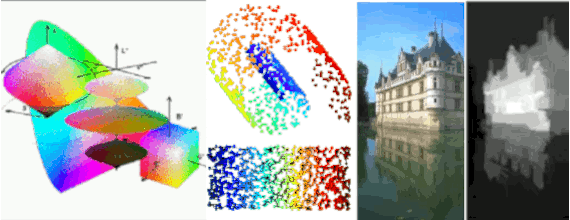
Fusion of color-based multi-dimensional scaling maps for saliency estimation
IntechOpen Book Chapter, Visual Object Tracking -Recent Advances, 2024
|
COSOV1NET Algorithm
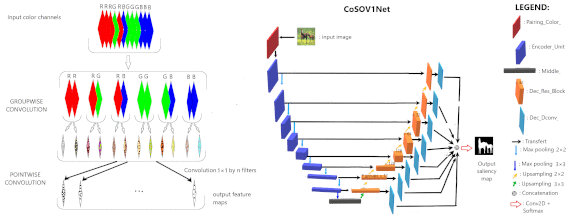
CoSOV1Net: Cone-and Spatial-Opponency primary Visual cortex-inspired
neural Network for lightweight salient object detection
MDPI -Sensors, sect.: sensing &
imaging, (spec. issue: object detect. based on vis.
sens. & neur. net.), vol. 23 (14):6450, July 2023
|
PPMRF Algorithm
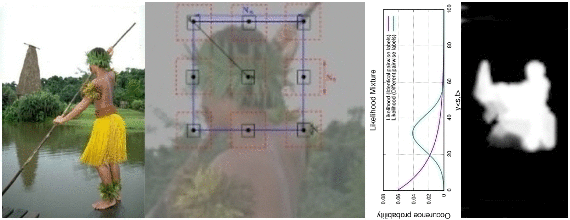
Saliency map estimation using a pixel-pairwise-based unsupervised Markov Random Field model
MDPI -Mathematics, 11(4):986, February 2023
|
NACCL Algorithm
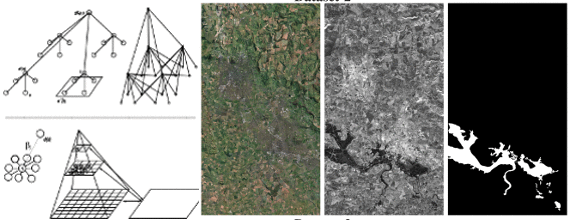
MRF models based on a neighborhood adaptive class conditional likelihood
for multimodal change detection
Journal, AI, Computer Science and Robotics Technology, vol. 8(4):110, April 2022
|
ESCLBP Algorithm
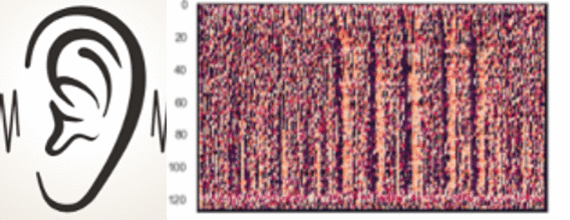
Environmental sound classification using local binary pattern and audio features collaboration
IEEE Trans. on Multimedia, 23:3978-3985, November 2020
|
CICMMCD Algorithm
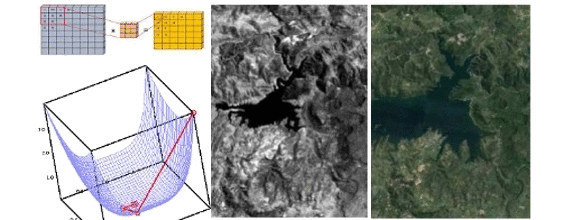
Multimodal change detection using a circular invariant
convolution model-based mapping
ASTES Journal, 5(5):1288-1298, October 2020
|
VFBAIS Algorithm
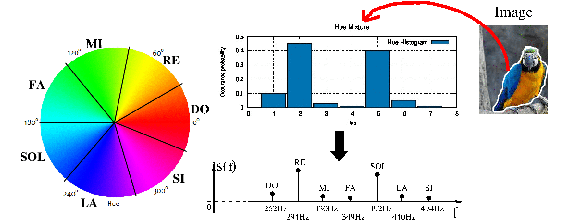
A hierarchical visual feature-based approach for image sonificationn
IEEE Trans. on Multimedia, 23:706-715, April 2020
|
FPMSMCD Algorithm
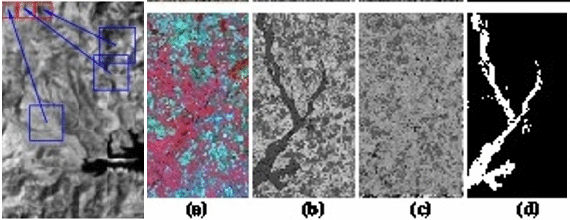
A fractal projection and Markovian segmentation based approach for
multimodal change detection
IEEE Trans. on Geoscience and Remote
Sensing, 58(11):8046-8058, June 2020
|
M3CD Algorithm
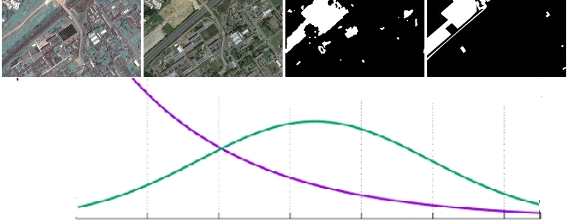
Multimodal change detection in remote sensing images
using an unsupervised pixel pairwise based Markov Random Field model
IEEE Trans. on Image Processing, 29(1):757-767, January 2020
|
GCEBFM Algorithm
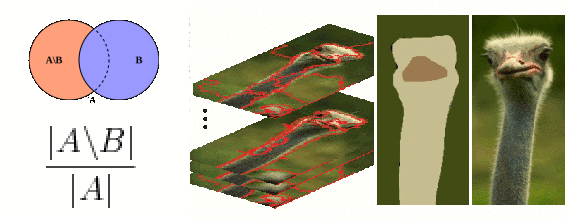
A novel fusion approach based on the global
consistency criterion to fusing multiple segmentations
IEEE Trans. on Systems, Man, and Cybernetics: Systems, 47(9):2489-2502, September 2017.
|
BIEDA Algorithm
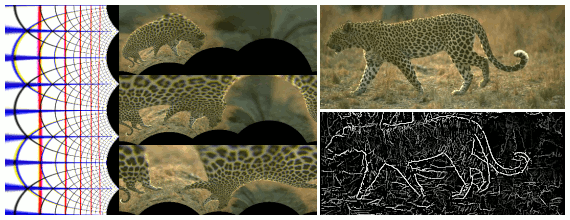
A biologically-inspired framework for contour detection
Pattern Analysis and Applications, 20(2):365-381, May 2017.
|
SCVOI Algorithm
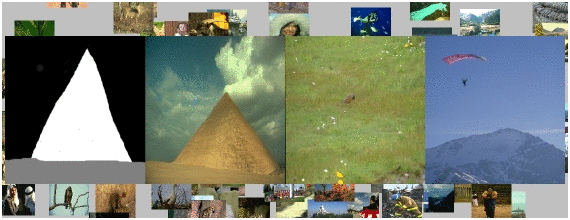
Segmentation data visualizing and clustering
Multimedia Tools and Applications, 76(1):1531-1552, January 2017.
Results obtained by our algorithm: The source (C++/Linux) code of the SCVOI algorithm (only ppm image are supported) can be downloaded here tar.gz |
BISDA Algorithm
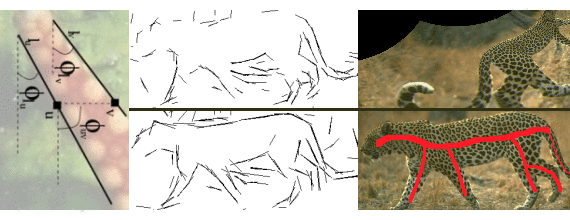
Symmetry detection based on multiscale pairwise texture boundary segment interactions
Pattern Recognition Letters, 74:53-60, Elsevier, February 2016.
|
PAMGA Algorithm
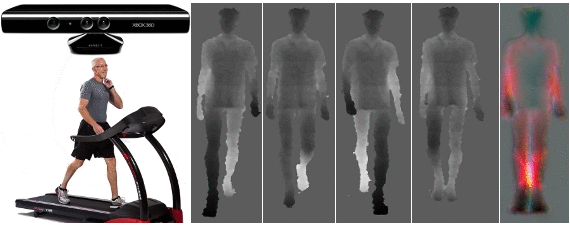
A perceptual maps for gait symmetry quantification and pathology detection
BioMedical Engineering OnLine, 14(1):99, October 2015.
|
FMBFM Algorithm
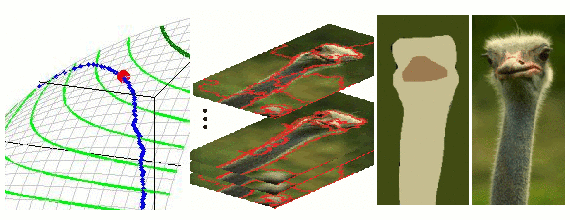
A precision-recall criterion based consensus model for fusing multiple segmentations
International Journal of Signal
Procesing, Image Processing and Pattern
Recognition, 7(3): 61-82, July 2014.
|
VOIBFM Algorithm
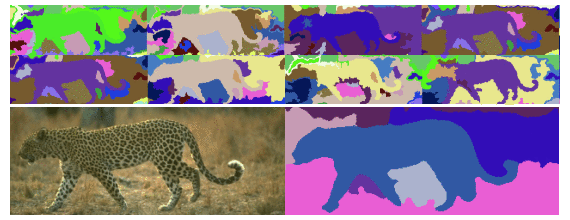
A label field fusion model with a variation of information estimator for image segmentation
Information Fusion, Elsevier, vol. 20:
7-20, January 2014.
|
SFSBM Algorithm
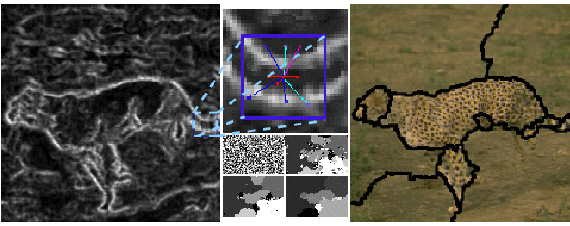
A non-stationary MRF model for image segmentation from a soft boundary map
Pattern Analysis & Aplications, 17(1)-129-139, 2014.
|
MDSCCT Algorithm
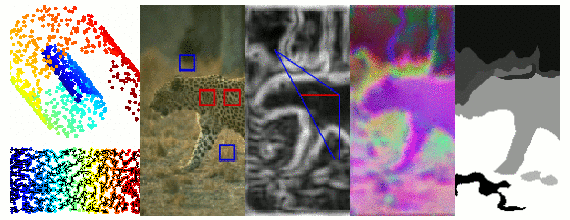
MDS-based segmentation model for the fusion of contour and
texture cues in natural images
Computer Vision and Image Understanding, 116(9):981-990, Sept. 2012.
|
PAGETM Algorithm
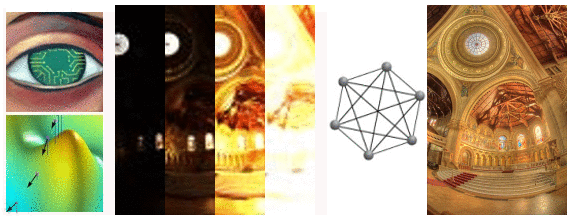
Non-local pairwise Gibbs energy based model for the HDR image
compression problem
Journal of Electronic Imaging, 21(1):013016, January-March 2012.
|
BCOCDM Algorithm
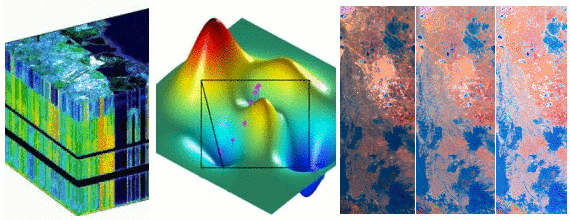
A bi-criteria optimization approach based dimensionality reduction model for the
color display of hyperspectral images
IEEE Trans. on Geoscience and Remote Sensing,50 (2) : 501-513, Jan. 2012.
|
OBEHS Algorithm
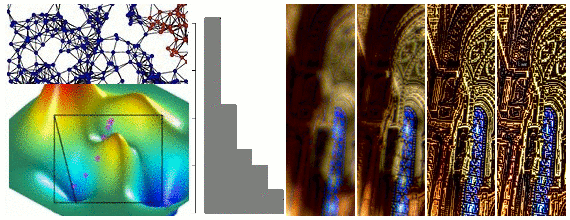
An energy based model for the image edge histogram specification problem
IEEE Trans. on Image Processing, 21(1):379-386, Jan. 2012.
|
MD2S Algorithm
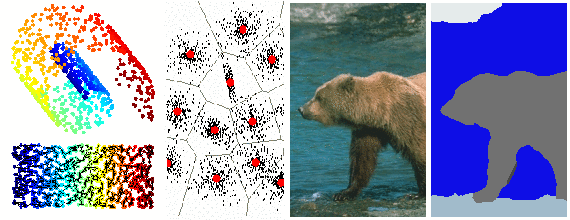
MDS-based multiresolution non-linear dimensionality reduction model
for color image segmentation
IEEE Trans. on Neural Networks, 22(3): 447-460, March 2011.
|
SCKM Algorithm
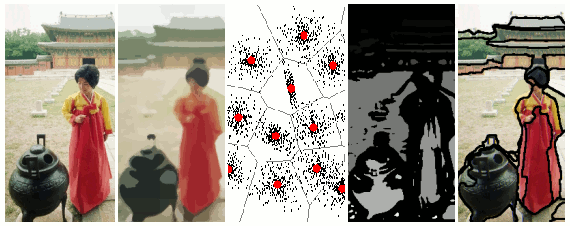
A de-texturing and spatially-constrained K-means approach for image segmentation
Pattern Recognition Letters, 32(2):359-367, Jan. 2011.
|
M4ICD Algorithm
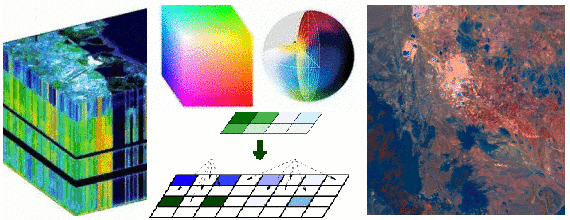
A multiresolution Markovian fusion model for the color visualization of hyperspectral images
IEEE Trans. on Geoscience and Remote Sensing, 48(12):4236-4247, Dec. 2010.
|
SFRBR Algorithm
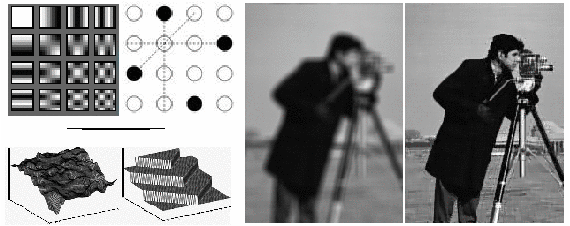
Fusion of regularization terms for image restoration
Journal of Electronic Imaging, 19(3):333004-,July-Sept. 2010
|
PRIF Algorithm
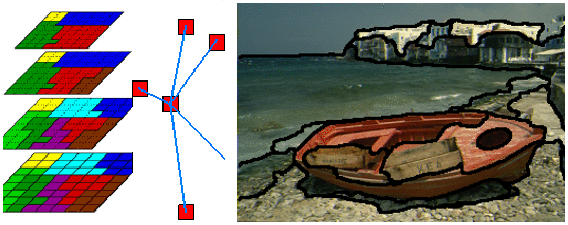
A label field fusion Bayesian model and its penalized maximum Rand estimator for image segmentation
IEEE Trans. on Image Processing,19(6):1610-1624, June 2010
|
NLREST Algorithm
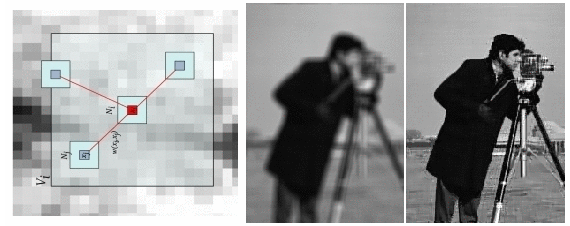
A non-local regularization strategy for image deconvolution
Pattern Recognition Letters, 29(16):2206-2212, Dec. 2008
|
FCR Algorithm
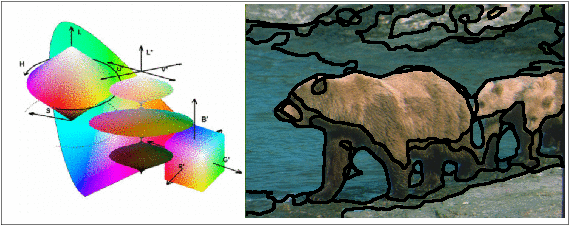
Segmentation by fusion of histogram-based K-means clusters in different color spaces
IEEE Trans. on Image Processing,17(5):780-787, May 2008
|
DCT-EM Algorithm
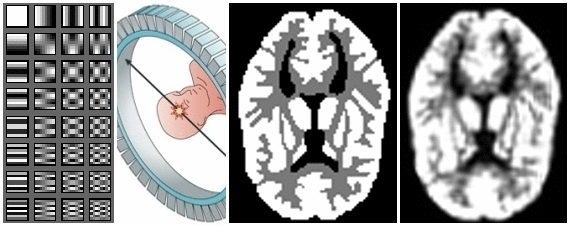
DCT-based complexity regularization for EM tomographic reconstruction
IEEE Trans. on Biomedical Engineering, 55(2):801-805, Feb. 2008
|
DECWAV Algorithm
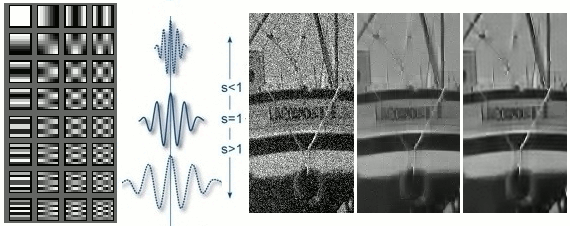
A post-processing deconvolution step for wavelet-based image denoising methods
IEEE Signal Processing Letters, 14(9):621-624, Sept. 2007
|
SIMPAR Algorithm

Image denoising by averaging of piecewise constant simulations of image partitions
IEEE Trans. on Image Processing, 16(2):523-533, Feb. 2007
|

All rights reserved. All the softwares are distributed under the terms of a BSD-style license, i.e., redistribution and use in source and binary forms, with or without modification, are permitted provided that the following conditions are met:
- Redistributions of source code must retain the above copyright notice, this list of conditions and the following disclaimer.
- Redistributions in binary form must reproduce the above copyright notice, this list of conditions and the following disclaimer in the documentation and/or other materials provided with the distribution.
- Neither the name of the Université de Montréal nor the names of its contributors may be used to endorse or promote products derived from this software without specific prior written permission.
THIS SOFTWARE IS PROVIDED BY THE COPYRIGHT HOLDERS AND CONTRIBUTORS
AS ISAND ANY EXPRESS OR IMPLIED WARRANTIES, INCLUDING, BUT NOT LIMITED TO, THE IMPLIED WARRANTIES OF MERCHANTABILITY AND FITNESS FOR A PARTICULAR PURPOSE ARE DISCLAIMED. IN NO EVENT SHALL THE COPYRIGHT OWNER OR CONTRIBUTORS BE LIABLE FOR ANY DIRECT, INDIRECT, INCIDENTAL, SPECIAL, EXEMPLARY, OR CONSEQUENTIAL DAMAGES (INCLUDING, BUT NOT LIMITED TO, PROCUREMENT OF SUBSTITUTE GOODS OR SERVICES; LOSS OF USE, DATA, OR PROFITS; OR BUSINESS INTERRUPTION) HOWEVER CAUSED AND ON ANY THEORY OF LIABILITY, WHETHER IN CONTRACT, STRICT LIABILITY, OR TORT (INCLUDING NEGLIGENCE OR OTHERWISE) ARISING IN ANY WAY OUT OF THE USE OF THIS SOFTWARE, EVEN IF ADVISED OF THE POSSIBILITY OF SUCH DAMAGE.
Last update: June 2011